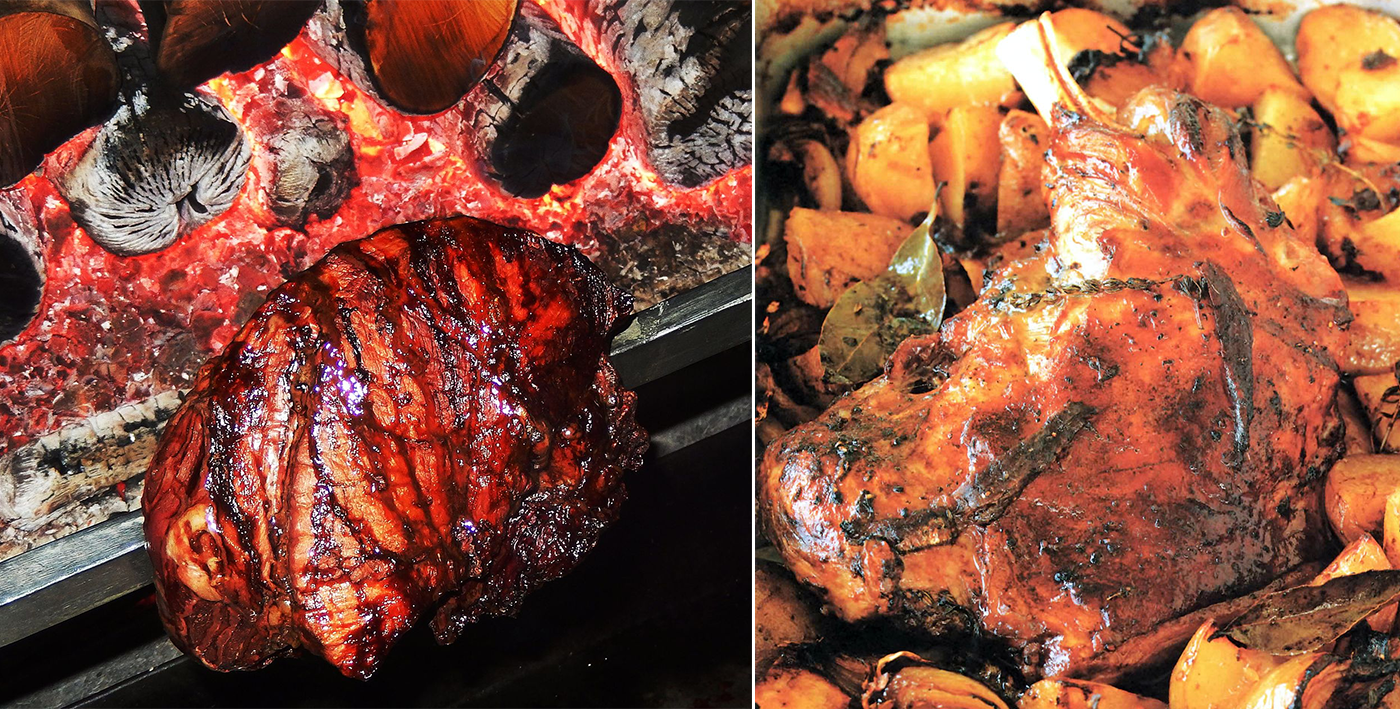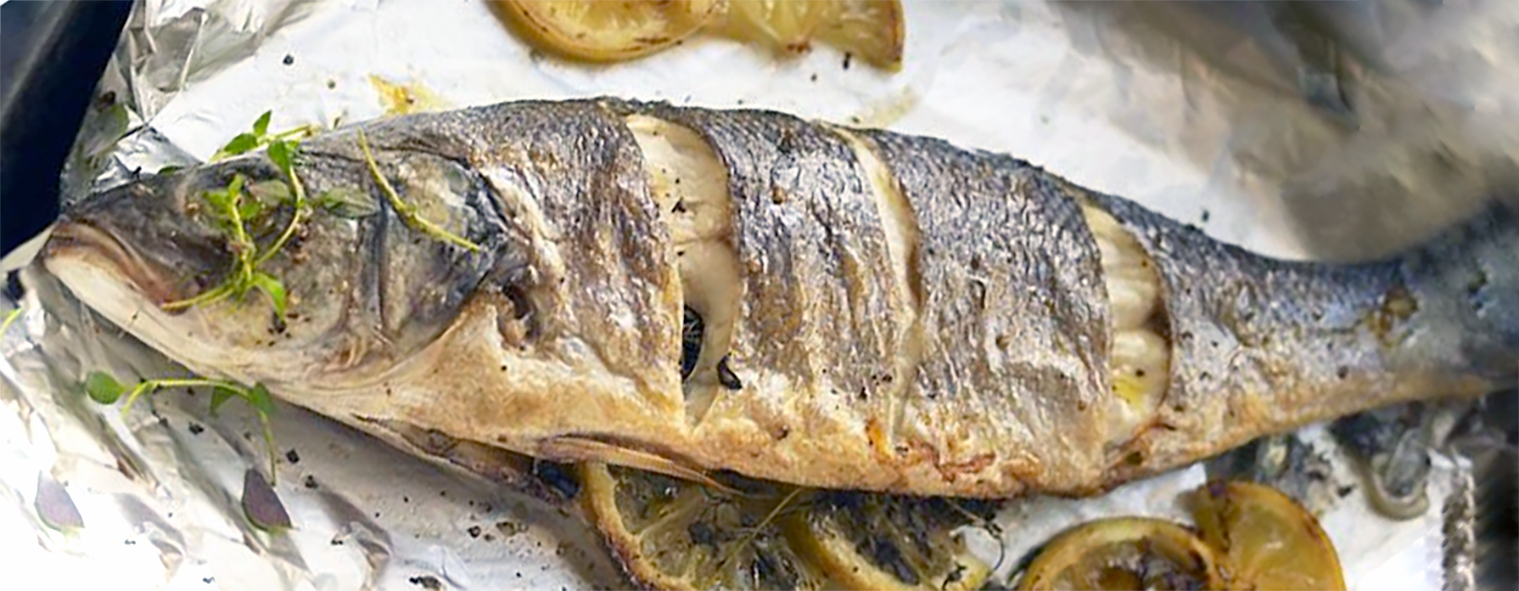FabulousFusionFood's Roasting Recipes 4th Page
 A shoulder of lamb roasting on an Elizabethan-style spit (left) and in a modern oven, (right).
A shoulder of lamb roasting on an Elizabethan-style spit (left) and in a modern oven, (right).
Welcome to FabulousFusionFood's Roasting Recipes Page — This is a continuation of an entire series of pages that will, I hope, allow my visitors to better navigate this site. As well as displaying recipes by name, country and region of origin I am now planning a whole series of pages where recipes can be located by meal type and main ingredient. This page gives a listing of all the roasting recipes. The technique of roasting is perhaps the oldest cooking technique. After all you can roast meat by simply placing it in the embers of a fire or on hot stones or a pit. This is why the simplest way of cooking meat is to roast it. With modern ovens roasting has become a common and complex technique and roasting can be defined as a high temperature method of cooking over a prolonged period of time where the temperature about the product being roasted is even. Roasting is an excellent method of tenderizing meat, which is why it's a common technique for cooking meat. But it also works well for vegetables, especially potatoes and other staple carbohydrate sources. Being a simple cooking technique, roasting recipes are known from every culture and every major cuisine on earth.
Roasting is a cooking method that uses dry heat where hot air covers the food, cooking it evenly on all sides with temperatures of at least 150°C from an open flame, oven, or other heat source. Roasting can enhance the flavour through caramelization and Maillard browning on the surface of the food. Roasting uses indirect, diffused heat (as in an oven), and is suitable for slower cooking of meat in a larger, whole piece.[1] Meats and most root and bulb vegetables can be roasted. Any piece of meat, especially red meat, that has been cooked in this fashion is called a roast. Meats and vegetables prepared in this way are described as being 'roasted', e.g., roast chicken or roast squash.
Before the invention and widespread use of stoves, food was primarily cooked over open flames from a hearth. To roast meat, racks with skewers, or, if accessible, complicated gear arrangements, would be utilized to turn the piece(s). In the past, this method was often associated with the upper class and special occasions, rather than customary mealtimes, because it required freshly killed meat and close attention during cooking. It was easy to ruin the meat's taste with a smoky fire or negligence to rotate it at regular intervals. Thus, elite families, who were able to afford quality meat, appointed this task to servants or invested in technology like automatic turning devices. With further technological advances, cooking came to accommodate new opportunities. By the 1860s, working families were able to afford low-priced stove models that became sufficiently available. However, the key element of observation during roasting became difficult and dangerous to do with the coal oven. Hence, traditional roasting disappeared as kitchens became no longer equipped for this custom and soon thereafter, "baking" came to be "roasting".
 Roast fish (sea bass).
Roast fish (sea bass).
For roasting, the food may be placed on a rack, in a roasting pan or, to ensure even application of heat, may be rotated on a spit or rotisserie. If a pan is used, the juice can be retained for use in gravy, Yorkshire pudding, etc. During oven roasting, hot air circulates around the meat, cooking all sides evenly. There are several plans for roasting meat: low-temperature cooking, high-temperature cooking, and a combination of both. Each method can be suitable, depending on the food and the tastes of the people.
For more information on how best to roast various dishes, see this site's roasting guide.
The alphabetical list of all the roasting recipes on this site follows, (limited to 100 recipes per page). There are 367 recipes in total:
Page 4 of 4
Page 4 of 4